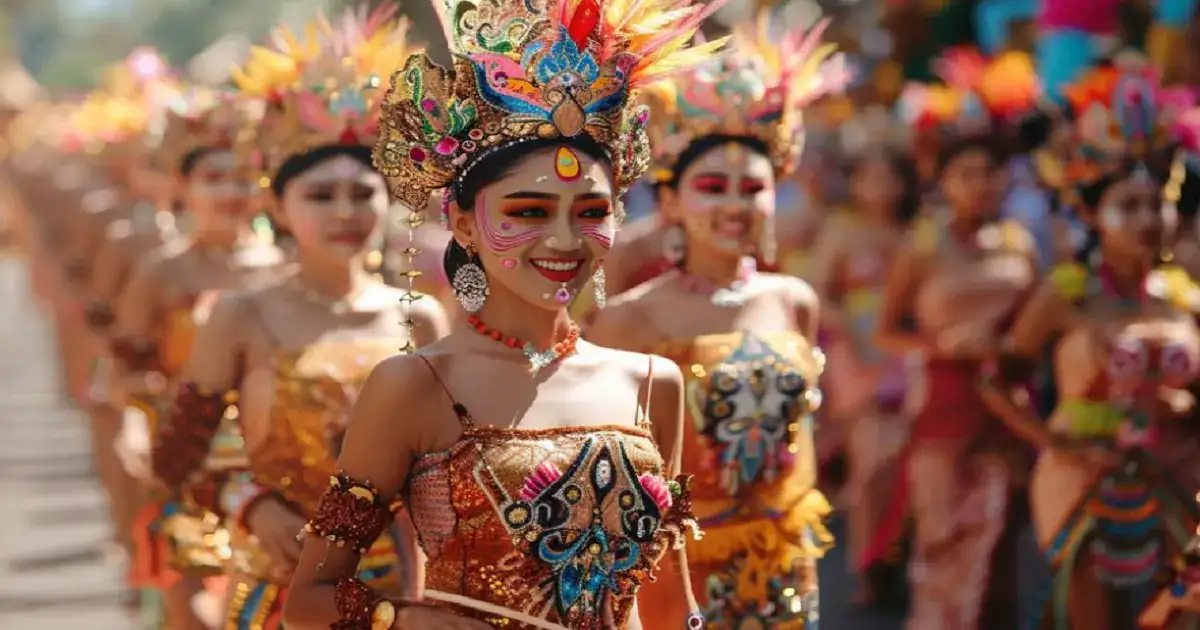Introduction
The Philippines is a country known for its rich culture, history, and unique customs. From community values to festive celebrations, the 5 traditions in the Philippines reflect the vibrant and welcoming nature of Filipino society. In this article, we will explore five important traditions in the Philippines, each with its own significance and cultural importance.
1. Bayanihan: The Spirit of Community
One of the most well-known 5 traditions in the Philippines is Bayanihan. This term refers to the spirit of community cooperation, where neighbors and fellow Filipinos work together for a common goal. Traditionally, Bayanihan was observed when people would physically lift a house and move it to a new location, but today, this spirit is seen in helping others during times of need, whether during natural disasters or community projects.
The core of Bayanihan is unity, which remains one of the most cherished 5 traditions in the Philippines. It exemplifies how Filipinos value collective action and solidarity.
Key Points:
- Symbolizes community cooperation and mutual help
- Traditionally, people physically moved houses together
- A timeless tradition that demonstrates Filipino unity
2. Fiestas: Celebrations of Faith and Culture
Another vibrant example of 5 traditions in the Philippines is the tradition of Fiestas. Almost every town in the Philippines holds a fiesta, a colorful celebration that honors a patron saint, a historical event, or a local harvest. These fiestas are known for their grand parades, street dances, and a sense of togetherness that brings the whole community together.
Some of the most famous 5 traditions in the Philippines include the Sinulog Festival in Cebu, the Ati-Atihan Festival in Kalibo, and the Panagbenga Festival in Baguio. These festivals highlight Filipino devotion to faith and their love for celebrations.
Key Points:
- Celebrates local saints, events, and seasons
- Known for parades, music, and dancing
- A time for bonding and unity within the community
3. Pamamanhikan: The Filipino Marriage Tradition
Pamamanhikan is one of the most significant 5 traditions in the Philippines when it comes to Filipino marriage customs. This tradition involves the groom’s family visiting the bride’s family to formally ask for her hand in marriage. During Pamamanhikan, the groom’s family brings gifts and discusses the upcoming wedding plans with the bride’s family.
This tradition is important in Filipino culture, as it reflects respect, family involvement, and the building of stronger familial bonds before marriage. Pamamanhikan is an essential part of the 5 traditions in the Philippines that emphasizes family unity.
Key Points:
- A formal marriage proposal involving both families
- Demonstrates respect and unity between families
- A practice rooted in Filipino cultural values
4. Mano Po: A Sign of Respect for Elders
The Filipino gesture of Mano Po is one of the most endearing 5 traditions in the Philippines that involves showing respect for older individuals. In this practice, a younger person takes the elder’s hand and places it gently on their forehead. It is a way of honoring the wisdom and authority of the older generation.
Mano Po is a tradition that teaches respect, reverence, and gratitude, which are core values in Filipino culture. It is commonly practiced during family gatherings and special occasions, and it reinforces the importance of honoring one’s elders, making it one of the key 5 traditions in the Philippines.
Key Points:
- A gesture to show respect for elders
- Symbolizes reverence and cultural respect
- Passed down from generation to generation
5. Pasko: Christmas in the Philippines
Christmas, or Pasko, is arguably one of the most loved and celebrated 5 traditions in the Philippines. Filipino Christmas celebrations begin as early as September, making the Philippines home to the longest Christmas season in the world. During Pasko, families come together to celebrate with Simbang Gabi, a series of early morning Masses, and by decorating homes with Parol lanterns, which represent the Star of Bethlehem.
The holiday season in the Philippines is a time for family reunions, festivities, and communal gatherings, making Pasko one of the most cherished 5 traditions in the Philippines.
Key Points:
- Begins in September and lasts until January
- Celebrated with Simbang Gabi and the display of Parol lanterns
- A time for family, faith, and joy
Frequently Asked Questions (FAQs)
1. What are the 5 traditions in the Philippines?
The most significant 5 traditions in the Philippines include Bayanihan (community spirit), Fiestas (festivals of faith and culture), Pamamanhikan (the marriage proposal tradition), Mano Po (respect for elders), and Pasko (Christmas).
2. Why are Fiestas important in Filipino culture?
Fiestas are important because they celebrate faith, culture, and unity. They are a time for families and communities to gather, give thanks, and enjoy music, food, and festivities together.
3. What does Pamamanhikan symbolize?
Pamamanhikan symbolizes respect, family unity, and the formalization of the marriage proposal. It reflects the importance of family involvement in Filipino culture.
4. How long does Christmas (Pasko) last in the Philippines?
Christmas in the Philippines lasts from September until January, making it the longest Christmas season in the world. It is a time of religious observance, family bonding, and festive celebrations.
5. Is Mano Po still practiced today?
Yes, Mano Po is still widely practiced in the Philippines, especially in family gatherings. It is a gesture of respect that continues to be an important part of Filipino culture.
Conclusion
In conclusion, the 5 traditions in the Philippines are an integral part of Filipino life. From the communal unity of Bayanihan to the festive spirit of Pasko, these traditions embody the values of family, respect, and faith that are central to Filipino culture. These 5 traditions in the Philippines continue to play a crucial role in strengthening the social fabric of the country, ensuring that these cherished customs are passed down through generations.
For more important news please visit my website: Make 1M
